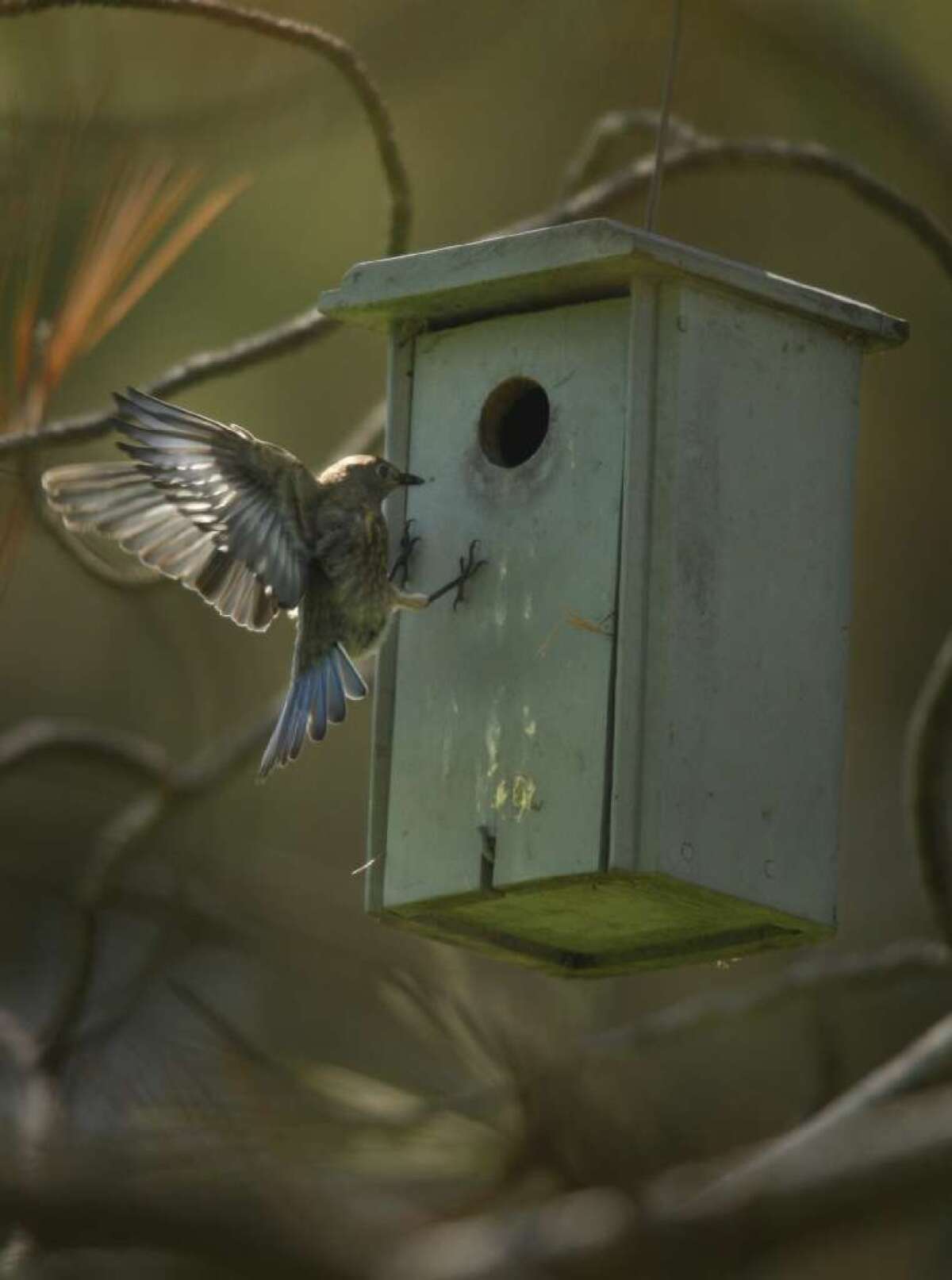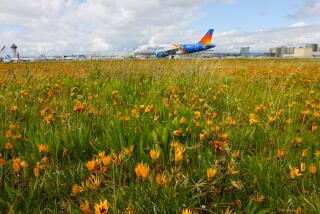A boon for bluebirds

The Southern California Bluebird Club’s dedication to installing and monitoring nesting boxes in Orange County parks, golf courses, cemeteries and schoolyards has made the species’ iridescent cobalt flash a common sight throughout the region.
The effort started in 1984, when the club’s founder, Dick Purvis, hung 10 hand-made boxes in the trees of Anaheim’s Featherly Regional Park. A decade later, club members fledged about 1,000 Western bluebirds.
This year, with about 2,000 nesting boxes placed in 40% of the county’s parklands, “we expect to fledge about 8,800 bluebirds,” said Purvis, 85. “It’s been a roaring success. Three decades ago, I only saw bluebirds in the foothill areas. Today, Orange County is covered with them.”
“The problem is that we only have about 100 volunteer nest monitors -- we need more,” he added. “Orange County has room for twice the number of boxes we’ve installed.”
Bluebird club members hang nest boxes 12 to 20 feet high, clear of predators, vandals and sprinklers. Volunteers check the boxes weekly, counting eggs and chicks and removing dead birds.
Purvis designed the boxes, which include a 1 1/2-inch entrance hole, small enough to keep predatory starlings out, and a hinged opening to allow volunteers to reach in. The boxes are raised in a basket attached to a pole, which members call the Purvis lifter.
Activity in the nesting boxes picks up during the breeding season of April through August, which is when adult bluebirds are fetching insects for their young.
The 300-member club this month launched a pilot program in Laguna Niguel Regional Park with the Community Roots Academy in Aliso Viejo to preserve more dead and dying trees because of their value to wildlife including nesting birds. The club hopes to eventually kick off bluebird population explosions in Los Angeles, Riverside, San Bernardino, Ventura and San Diego counties.
“I’ve spent the last 30 years trying to make the world a better place for bluebirds,” Purvis said. “It’s certainly not been profitable, but I enjoy it tremendously.”
Bob Franz, the club’s co-founder, added: “You can’t have too many bluebirds.”
louis.sahagun@latimes.com







